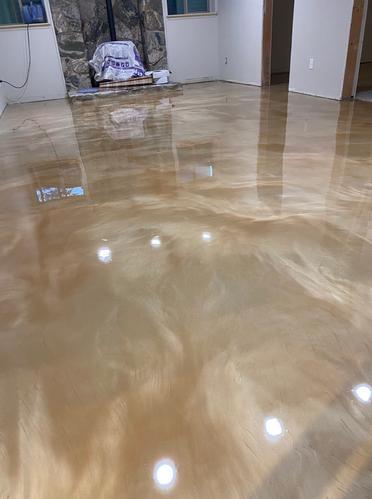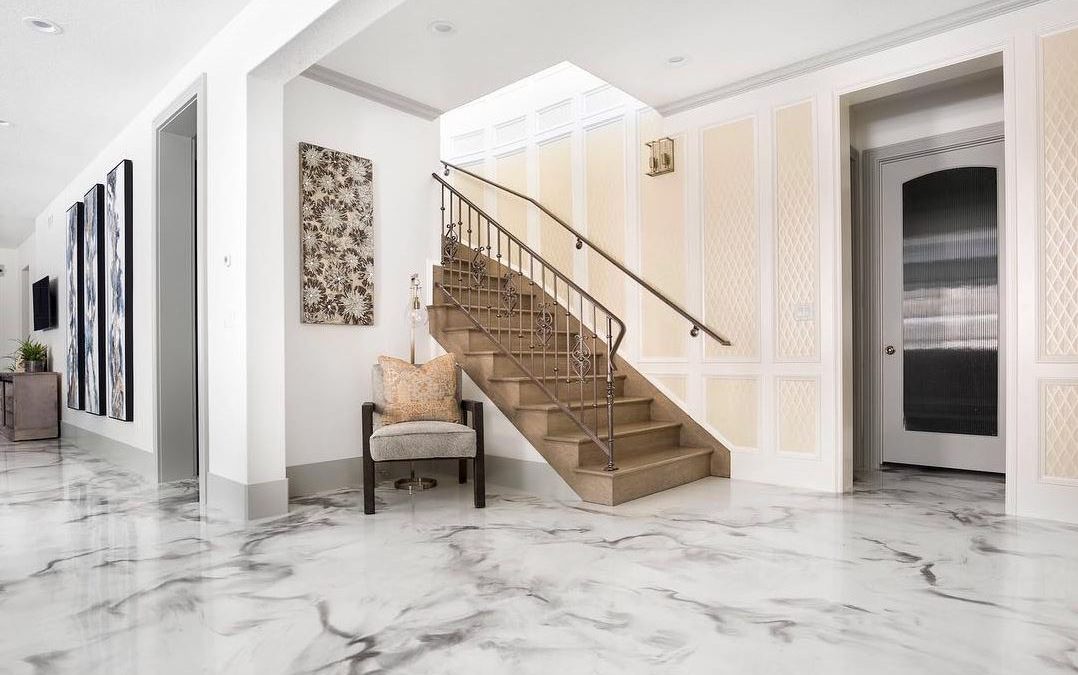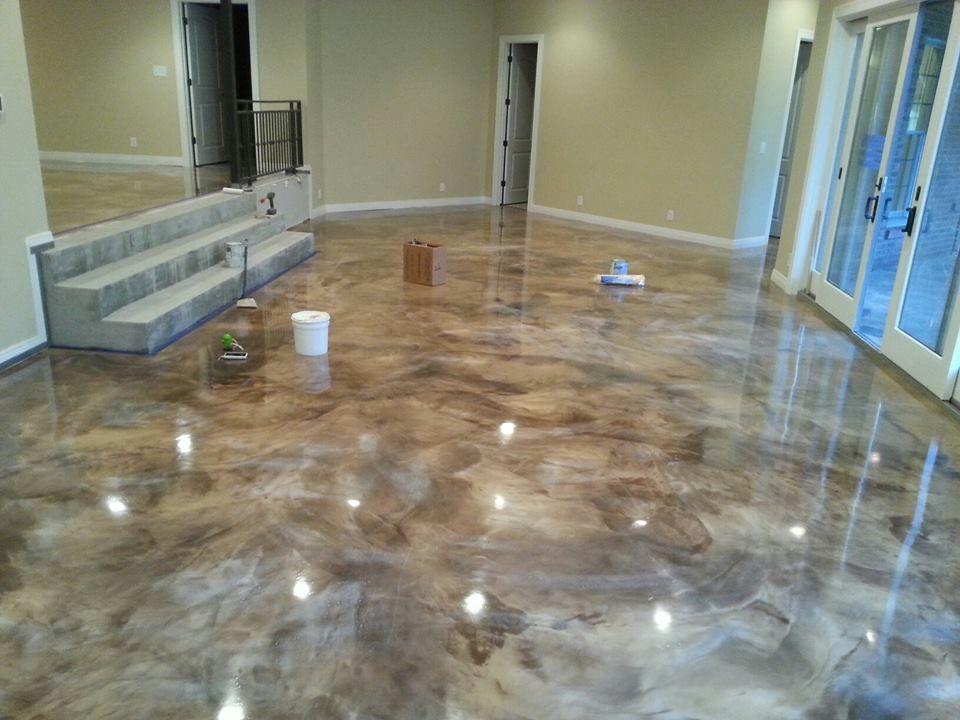Ultimate Guide to Setting Up Resilient Epoxy Floors in Residential Spaces
When it comes to transforming household areas with resilient epoxy floors, a methodical strategy is key. There's one aspect often forgot that can significantly impact the long life and quality of the epoxy flooring.
Choosing the Right Epoxy Floor Covering System
Choosing the suitable epoxy floor covering system is a vital step in making certain longevity and efficiency in residential rooms. Epoxy flooring supplies toughness, easy upkeep, and visual allure, making it a prominent option for property applications. When choosing an epoxy system, aspects such as the sort of epoxy, level of resilience called for, style choices, and budget restraints should be taken into consideration.
There are various sorts of epoxy floor covering systems readily available, consisting of water-based epoxy, solvent-based epoxy, and 100% solid epoxy. Water-based epoxy is environmentally friendly and very easy to apply, making it suitable for property use. Solvent-based epoxy provides an extra long lasting surface but emits solid smells throughout installation. 100% strong epoxy is the most long lasting alternative, suitable for high-traffic locations in property spaces.

Preparing Your Residential Room
When considering the setup of long lasting epoxy floorings in property areas, ample preparation of the area is basic to making certain a durable and successful application. The very first step in preparing your property area for epoxy floor covering is to extensively clean up the surface. Any kind of grease, debris, or dust need to be removed to make sure proper attachment of the epoxy layer. This can be done with sweeping, vacuuming, and cleaning the flooring with a suitable cleaner.
These ought to be filled up and leveled to develop a smooth and also surface area for the epoxy layer to be used. In addition, check for dampness problems as too much wetness can trigger the epoxy to bubble or peel. Welding Inspection Service.
Finally, ensure correct air flow in the area throughout the setup process to enable the epoxy fumes to dissipate. Ample preparation of the suburb sets the structure for a successful epoxy floor covering application.
Applying Epoxy Coating
To start the procedure of applying epoxy finish, thoroughly blend the epoxy material and hardener according to the maker's directions. It is vital to comply with the advised blending ratios exactly to guarantee the epoxy cures effectively and achieves optimum toughness. When the epoxy elements are blended, pour the mix onto the ready flooring surface area in a bow pattern.
Utilizing a roller with a medium-nap cover, spread out the epoxy evenly over the floor, operating in convenient sections to avoid the epoxy from drying out too swiftly. Make certain to back-roll the used epoxy to get rid of any pools or uneven locations, making certain a regular and smooth finish.

Allow the epoxy layer to treat according to the producer's guidelines prior to waging any type of additional steps to ensure a long-lasting and durable coating.
Making Certain Appropriate Treating and Drying Out
Effective go healing and drying processes are necessary to achieve the desired sturdiness and durability of epoxy floorings in residential spaces. Correct treating involves offering the epoxy covering adequate time to solidify and bond entirely to the substratum. This procedure usually takes around 24 to 72 hours, depending on the certain item used and ecological problems. Throughout this duration, it is vital to limit foot traffic and prevent putting hefty things on the floor to avoid any kind of damages or blemishes.
In addition, making certain adequate ventilation in the space is vital for the drying procedure. Appropriate air movement helps the epoxy coating to heal uniformly and prevents any concerns like bubbling or irregular drying. Preserving constant temperature degrees within the treating location click here for more is additionally important, as severe temperatures can adversely influence the curing procedure. It is recommended to adhere to the maker's standards for curing and drying out times to ensure optimal outcomes and make the most of the longevity see this of the epoxy floor in domestic setups.

Preserving and Extending Epoxy Flooring Life-span
Appropriate upkeep practices play an essential function in expanding the life expectancy of epoxy floorings in property settings. Normal cleansing is vital to stop dirt and particles from damaging the surface area of the epoxy flooring.
To better safeguard the epoxy floor, take into consideration using a new overcoat every couple of years, particularly in high-traffic locations. By complying with these upkeep tips, homeowners can guarantee their epoxy floorings remain sturdy and aesthetically appealing for years to come (Welding Inspection Service).
Verdict
In conclusion, setting up sturdy epoxy floorings in residential areas requires cautious consideration of the epoxy floor covering system, complete preparation of the space, appropriate application of the epoxy layer, and ensuring right treating and drying processes. By adhering to these steps vigilantly, property owners can accomplish a resilient and aesthetically appealing epoxy flooring that improves the resilience and appearances of their living spaces.
When it comes to transforming residential spaces with resilient epoxy floorings, a systematic technique is essential. When choosing an epoxy system, factors such as the kind of epoxy, degree of toughness needed, layout choices, and spending plan constraints should be thought about.
There are various types of epoxy floor covering systems readily available, consisting of water-based epoxy, solvent-based epoxy, and 100% solid epoxy.When taking into consideration the installation of sturdy epoxy floorings in residential spaces, ample preparation of the location is essential to guaranteeing a successful and durable application.To begin the procedure of using epoxy covering, extensively blend the epoxy resin and hardener according to the maker's guidelines.